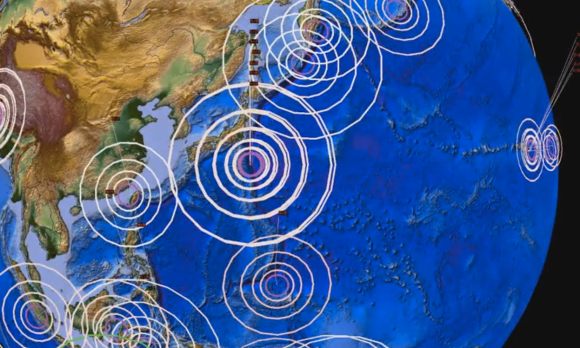
Japan is home to 110 active volcanoes, 47 of which are monitored continually by the Japan Meteorological Association (JMA). Japan also holds seven percent of all the active volcanoes in the world.
Last year, Mount Ontake in Nagano Prefecture exploded without warning, killing over 60 people, many of them hikers. Mount Hakone in the hot springs resort town near Mount Fuji is on level-2 alert. Mount Fuji itself, a dormant volcano and World Heritage site is being looked at with a wary eye by many and authorities are advising hikers to wear helmets, dust masks and goggles when climbing. The volcano that most appears in the news, however, is Sakurajima, located off Kyushu, which is also one of the world’s most active volcanoes.
“Dutchsinse,” a self-proclaimed “News Personality” who has a cult following on Facebook and YouTube gives a near daily video update of volcanic and earthquake activity around the world. He recently highlighted Japan’s volcanoes and earthquakes and warns that pressure building in the region of Sakurajima, along with other multiple large eruptions in the Pacific region, could be a sign of something bigger to come.
While the propensity for imminent volcanic destruction is scary, we also must respect that volcanic eruptions are, overall, good things because they allow the earth to release pent-up pressure and general volcanic frustration. We’re far better off letting volcanoes vent than trying to shut them up, right?
Earthquakes on the other hand, are less tolerable even if also geologically necessary. They are far less predictable and seem to have no other intent than to destroy mankind via its virtue of unpredictability. Whereas many volcanoes are visible and thus observable, tectonic plates are hidden under the earth or the seabed like terrorist cells waiting to unleash their destructive power. We know they’re there, we just don’t know when or exactly where they’ll attack.
So the appeal of being able to predict earthquake activity is great. We all hope that some day we’ll be able to look up the earthquake forecast, like the weather, and prepare for it accordingly.
Enter Dutchsinse and his current YouTube video titled “Major Earthquake Unrest–Next 7 day outlook–Pacific be prepared.” Dutchsinse’s real name is Micheal Janitch. No one really knows dutchsinse’s qualifications in volcanology or earthquakology and since he doesn’t back up his findings with any, we can only presume he has none. He’s highly controversial, with people accusing him of being a fake and a conspiracy theorist. All I can say is that on his Facebook page, he uses a hell of a lot of exclamation points.
But you have to admire a guy who is so passionate about volcanoes that he spends almost all of his days assembling videos and narrations with amazing graphics and real-time video and who then presents them in an easy-to-understand format. Makes you wonder, why aren’t any of the “qualified” people doing this too?
In this particular video, he uses Earthquake 3D to look at what he claims is 48 hours of 4.0 and above (presumably the Richter scale) earthquake activity around the world as related to volcanic eruptions.
▼Cool graphics! Learning about earthquakes can actually be fun.
▼This one shows a “swarm” of volcanoes off the Hawaiian islands.
▼Here, the Izu Trench is shown to the right of the orange markers indicating a chain of over 100 volcanoes on the ocean floor. There they sit, like little twinkle lights engineered by Ebenezer Scrooge.
So far so good. I don’t know about you, but I’ve already learned a lot just by seeing these graphics.
Dutchsinse’s idea is that by looking at volcanic and earthquake activity around the world, we can more easily predict what will happen closer to our own shores. Previous explosions and quakes affect far-away regions by either causing them to building up stress or ease it, and we can track how such events coincide to predict future activity.
While dutchsinse believes that eruptions further south in the Philippines and Indonesia indicate that stress is being taken away from Japan, at the same time he notes recent activity in the Hawaiian islands could be a sign of a large earthquake in the Pacific region.
His conclusion this week is that there is a high probability of an earthquake south of Sakurajima, as well as one north of Hokkaido, the latter of which, if over 7.0, will create a tsunami. “This is no light warning to be issued to south and north Japan,” he trumpets in his video. He bases his conclusions on the following three factors:
1. An active swarm along the Izu Trench.
2. At least two or three major volcanoes showing activity.
3. A recent upheaval of land
So, keeping these three points in mind, let’s take a closer look at the history of Japan’s volcanoes.
Japan has five levels of volcanic warnings: 1 (normal), 2 (advises restrictions to certain areas), 3 (do not approach volcano), 4 (prepare to evacuate) and 5 (evacuation).
Sakurajima–Kagoshima Prefecture
Sakurajima is an island 8km west of Kyushu’s Kagoshima city. The 17 x 23 km wide Aira caldera was formed 22,000 years ago and Sakurajima continues to be one of the most active volcanoes in the world. The constantly spewing volcano has experienced heightened activity with the Japan Meteorological Association reporting 855 explosive eruptions in 2013. In addition, 2,643 earthquakes were recorded, the bulk of them between Jan and March of 2013. From May 1-11 of this year, the JMA recorded 105 explosions from the Showa Crater (one of several craters on the island). On May 10, an explosion caused an ash plume 3.2 kilometers high.
Janitch sees this as one of the two major volcanoes showing activity that portends a large earthquake.
Mount Ontake–Nagano & Gifu prefectures
▼Mount Ontake, days after the explosion in September 2014.
Japan’s second highest volcano, Mount Ontake suddenly blew without warning last year, killing over 60 people. It had not erupted since 1991 and experts say there was no way to have foreseen such activity.
This volcano, (which should not be confused with the volcano of the same name on Sakurajima), has not been cited by Janitch in his latest predictions.
Mount Fuji–Shizuoka and Yamanashi Prefectures
Mount Fuji’s most recent eruption was in 1707, and took place 49 days after the large Hoei earthquake. The ash is said to have reached as far as Tokyo. Mount Fuji is considered a dormant volcano but as a direct result of Mount Ontake’s surprise explosion last year climbers are now advised to wear a helmet, dust mask and goggles. In October 2014 three prefectures around Mount Fuji–Shizuoka, Yamanashi and Kanagawa–cooperated to stage their first disaster drill in case of an eruption.
Mount Fuji is only casually referred to by Janitch for its location near Hakone.
Mount Hakone–Kanagawa Prefecture
Hakone is a resort town near Mount Fuji known for its volcanic hot springs and its views of Mount Fuji as well as the ekiden marathon and car racing. The Mount Hakone volcano which hasn’t erupted for at least 800 years, is now showing signs of activity, and has prompted the town to raise its alert level to 2 over the past week. The hiking trail to Owakudani, or Great Boiling Valley, is, not surprisingly, closed. Live streaming of the vent can be seen here.
Janitch cites Mount Hakone as the second of the two major volcanoes showing activity. He also says the hot springs are shut down and that people can’t go there, but that is not true.
Nishinoshima–Ogasawara Islands
Nishinoshima is an island along the Izu Trench. It first erupted in 1978 which caused it to increase in size. More recently, on Dec. 8, 2013, it erupted again doubling its size by joining with another island called Niijima.
▼Nishinoshima in 1978
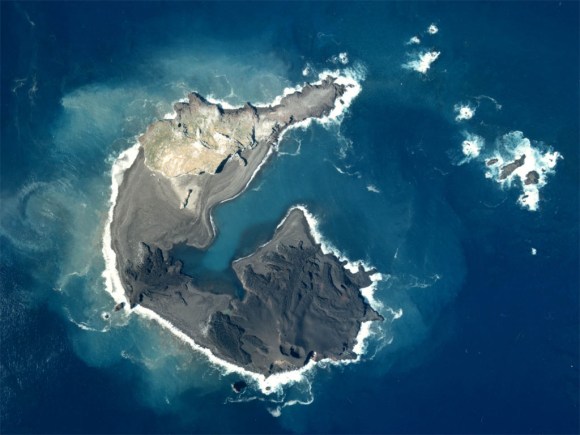
▼Nishinoshima in October 2014.
Janitch says this new island, evidence of activity in a swarm, is another indication of something larger to come in the very near future.
The third and final indication of an impending large tremor, according to Janitch, is a land mass that rose 15 meters (50 feet) out of the sea in Northern Hokkaido.
This is all great stuff. However, it is hardly novel. The novel part is suggesting that such earthquake activity can be predicted in the immediate future based on these factors. Surely his observations and methods have already been carried out by experts who have been researching the phenomenon much longer, such as the Geospatial Information Authority of Japan, the Japan Meteorological Agency’s Coordinating Committee for the Prediction of Volcanic Eruptions and the Central Disaster Management Council? And although people have praised Janitch for accurately predicting some earthquakes in the past, I’d hazard to say that there are also hundreds that haven’t come true.
I would guess that the real reason Janitch has such a following is merely because he is doing what many of us dream of doing: quitting our jobs, following our passions, and sharing our results with the world.
While Japan laments the decline in volcano experts (there are reported to be fewer than 50 involved in the predicting eruptions), they could look to this guy’s presentation skills to see how they might appeal to young people and make it a more interesting field to go into.
Are we all gonna die? No. Are some of us gonna die? Most certainly. Earthquakes and volcanoes have been killing people for as long as humanity has existed. So, go write out your will and buy your grave plot, not because you’re going to die soon, but because you should have already done this anyway. (P.S. If it’s cremation you’re looking for, then remember: location, location, location).
Source: YouTube (Dutchsinse)

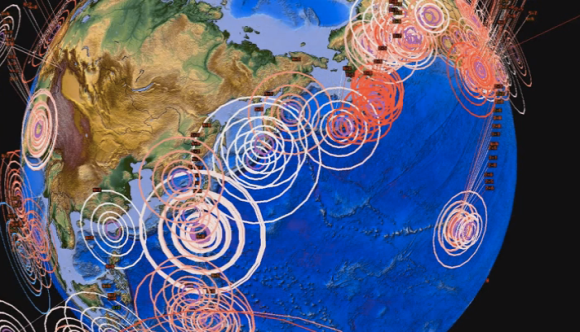
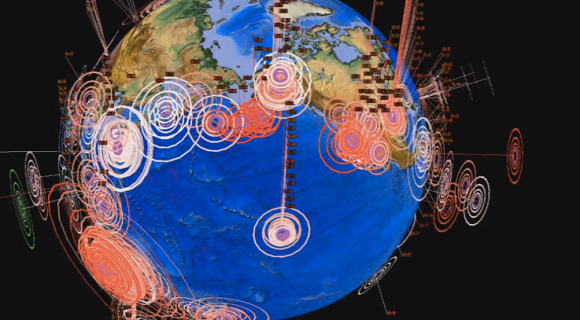
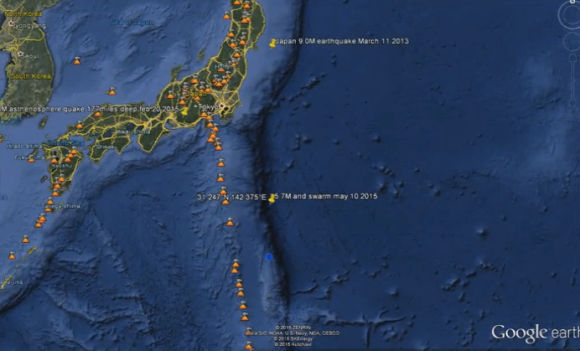
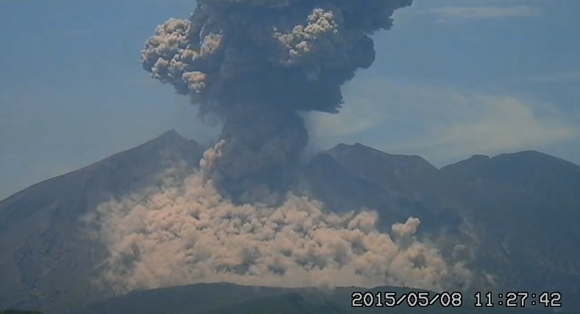
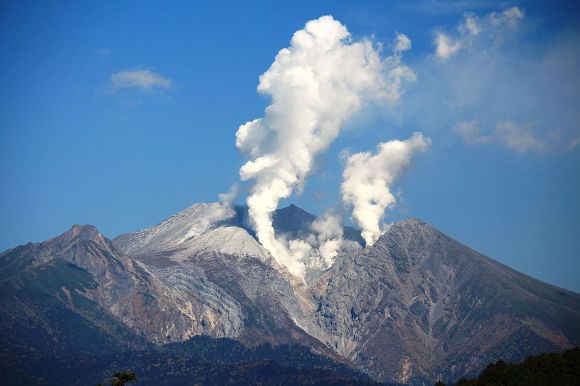

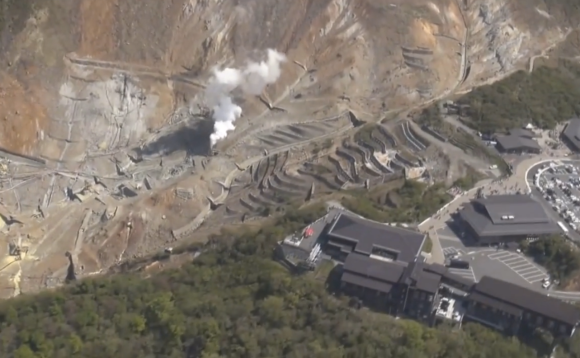
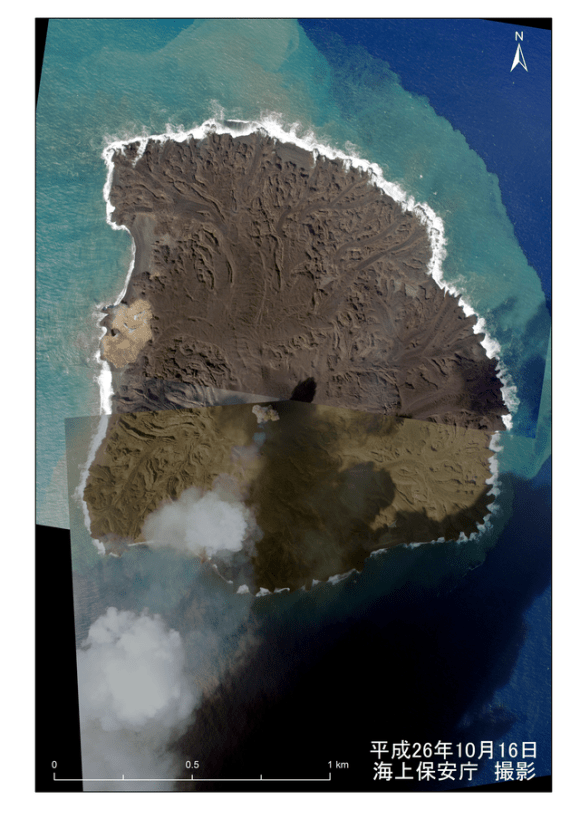 Wikipedia (Japan Coast Guard)
Wikipedia (Japan Coast Guard) “Mt. Fuji Should Erupt by 2015”: Ryuku University Professor Emeritus
“Mt. Fuji Should Erupt by 2015”: Ryuku University Professor Emeritus Sakurajima’s 500th eruption this year goes off with a bang and a huge cloud of ash
Sakurajima’s 500th eruption this year goes off with a bang and a huge cloud of ash Is Mt. Fuji About to Blow Its Top?
Is Mt. Fuji About to Blow Its Top? The 6 volcanoes most likely to destroy, like, everything (guess which country has the most)
The 6 volcanoes most likely to destroy, like, everything (guess which country has the most) Major eruption could cause Mt. Fuji’s new life as Cultural Heritage Site to be short lived
Major eruption could cause Mt. Fuji’s new life as Cultural Heritage Site to be short lived Japan may add Japanese language proficiency, lifestyle classes to permanent foreign resident requirements
Japan may add Japanese language proficiency, lifestyle classes to permanent foreign resident requirements Disillusionment at Tsukiji’s tourist-target prices led us to a great ramen restaurant in Tokyo
Disillusionment at Tsukiji’s tourist-target prices led us to a great ramen restaurant in Tokyo Starbucks Japan releases new zodiac chilled cup drink for 2026
Starbucks Japan releases new zodiac chilled cup drink for 2026 Full-size Evangelion statue appears at Japanese theme park with entry plug synchronization tests
Full-size Evangelion statue appears at Japanese theme park with entry plug synchronization tests Is this the most relaxing Starbucks in Japan?
Is this the most relaxing Starbucks in Japan? 7-Eleven Japan starts new temporary luggage storage service in over 300 branches
7-Eleven Japan starts new temporary luggage storage service in over 300 branches Starbucks on a Shinkansen bullet train platform: 6 tips for using the automated store in Japan
Starbucks on a Shinkansen bullet train platform: 6 tips for using the automated store in Japan Dragon Quest Super Light Cafe draws near! Command?
Dragon Quest Super Light Cafe draws near! Command? Sanma-men, the best ramen type that everyone in Japan forgets about
Sanma-men, the best ramen type that everyone in Japan forgets about Lacquerware supplier to emperor of Japan and Pokémon team up for new tableware
Lacquerware supplier to emperor of Japan and Pokémon team up for new tableware Starbucks teams up with 166-year-old Kyoto doll maker for Year of the Horse decorations【Photos】
Starbucks teams up with 166-year-old Kyoto doll maker for Year of the Horse decorations【Photos】 Tokyo’s Tsukiji sushi neighborhood asks tour groups to stay away for the rest of the month
Tokyo’s Tsukiji sushi neighborhood asks tour groups to stay away for the rest of the month Street Fighter Hadouken Churros to be launched and eaten in Tokyo, Okami pudding on offer too
Street Fighter Hadouken Churros to be launched and eaten in Tokyo, Okami pudding on offer too Japanese woman mistaken for bear
Japanese woman mistaken for bear Return of Totoro sequel short anime announced for Ghibli Park
Return of Totoro sequel short anime announced for Ghibli Park Japan’s human washing machines will go on sale to general public, demos to be held in Tokyo
Japan’s human washing machines will go on sale to general public, demos to be held in Tokyo Japanese train company is letting fans buy its actual ticket gates for their homes
Japanese train company is letting fans buy its actual ticket gates for their homes Is China’s don’t-go-to-Japan warning affecting tourist crowds in Tokyo’s Asakusa neighborhood?
Is China’s don’t-go-to-Japan warning affecting tourist crowds in Tokyo’s Asakusa neighborhood? Starbucks Japan unveils new Christmas goods and a rhinestone tumbler that costs 19,500 yen
Starbucks Japan unveils new Christmas goods and a rhinestone tumbler that costs 19,500 yen Tokyo considering law requiring more trash cans following litter increase in heavily touristed area
Tokyo considering law requiring more trash cans following litter increase in heavily touristed area Nintendo’s Kirby now delivering orders at Kura Sushi restaurants, but not in Japan
Nintendo’s Kirby now delivering orders at Kura Sushi restaurants, but not in Japan Tokyo event lets you travel back in time, for free, to celebrate 100 years since Showa era start
Tokyo event lets you travel back in time, for free, to celebrate 100 years since Showa era start Survey asks foreign tourists what bothered them in Japan, more than half gave same answer
Survey asks foreign tourists what bothered them in Japan, more than half gave same answer Japan’s deadliest food claims more victims, but why do people keep eating it for New Year’s?
Japan’s deadliest food claims more victims, but why do people keep eating it for New Year’s? We deeply regret going into this tunnel on our walk in the mountains of Japan
We deeply regret going into this tunnel on our walk in the mountains of Japan Studio Ghibli releases Kodama forest spirits from Princess Mononoke to light up your home
Studio Ghibli releases Kodama forest spirits from Princess Mononoke to light up your home Major Japanese hotel chain says reservations via overseas booking sites may not be valid
Major Japanese hotel chain says reservations via overseas booking sites may not be valid Put sesame oil in your coffee? Japanese maker says it’s the best way to start your day【Taste test】
Put sesame oil in your coffee? Japanese maker says it’s the best way to start your day【Taste test】 The top 10 annoying foreign tourist behaviors on trains, as chosen by Japanese people【Survey】
The top 10 annoying foreign tourist behaviors on trains, as chosen by Japanese people【Survey】 No more using real katana for tourism activities, Japan’s National Police Agency says
No more using real katana for tourism activities, Japan’s National Police Agency says Starbucks Japan reveals new sakura drinkware collection, inspired by evening cherry blossoms
Starbucks Japan reveals new sakura drinkware collection, inspired by evening cherry blossoms Everything you need to know about climbing Japan’s second-highest volcano
Everything you need to know about climbing Japan’s second-highest volcano Aso Jinja, one of Japan’s oldest shrines, hit with extensive damage in continuing earthquakes
Aso Jinja, one of Japan’s oldest shrines, hit with extensive damage in continuing earthquakes Flashlight Automatically Turns on in Earthquake
Flashlight Automatically Turns on in Earthquake Japanese scientist predicts another major earthquake in Japan by 2017
Japanese scientist predicts another major earthquake in Japan by 2017 Explore Japan’s volcanic beauty at Hakone’s latest attraction
Explore Japan’s volcanic beauty at Hakone’s latest attraction Outbreak of Rare Phantom Squid in Pacific Coast of Japan May Herald Imminent Earthquake
Outbreak of Rare Phantom Squid in Pacific Coast of Japan May Herald Imminent Earthquake
Leave a Reply